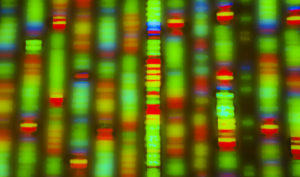
Scholars assess global regulatory practices concerning human genome editing.
In response to the increasing use of human genome editing technology to treat disease, the U.S. Food and Drug Administration (FDA) in January 2024 issued guidance on gene therapy products that use such technology. The new guidance provides key insights into FDA’s approach to regulating a class of therapies that could define the future of human medicine.
Genome editing refers to techniques for altering specific genes in an organism’s DNA. These techniques deliver more targeted therapy than older forms of genetic engineering because they allow scientists to modify specific DNA sequences, and thus to provide better treatment with fewer unforeseen consequences.
Generally, human genome editing comes in two forms: somatic genome editing and germline genome editing. Editing somatic cells—which are non-reproductive—causes genetic modifications that cannot be inherited by future generations. But modifying germline cells—including sperm and egg cells—produces permanent changes to the human genome that are inheritable by offspring.
Scientists often consider somatic genome editing to be less controversial than germline genome editing because of its limited future impact. Many countries, including the United States, the United Kingdom, and China, have allowed clinical trials using somatic gene editing to treat cancer, sickle cell disease, genetic eye conditions, and other genetic diseases. In the United States, FDA regulates somatic cell research the same way it does most other laboratory research, applying similar standards of internal biosafety review and general laboratory practice.
But no country has yet approved germline genome editing because of the safety and ethical concerns it raises. Germline cells pass on exact copies of their genes to the embryos they create, meaning that any changes to those cells become heritable by descendants. If those changes cause any adverse effects, the negative consequences could impact generations well into the future.
Consequently, a majority of European Union countries have ratified the Oviedo Convention, which prohibits heritable gene editing in humans. Several countries, including Germany, Canada, and Australia, have also adopted statutory prohibitions on heritable modifications to human embryos.
Some scholars, however, have pushed back against these total prohibitions on heritable human genome editing. Although they acknowledge that genome editing for enhancement purposes—such as increased athletic performance—might raise ethical concerns, these scholars argue that heritable human genome editing should be permitted to help prevent and cure serious genetic diseases, such as sickle cell disease. For example, in recent years, the National Academy of Sciences has issued two reports suggesting that the potential to prevent serious diseases should be adopted as a criterion for determining the permissibility of heritable human genome editing.
In this week’s Saturday Seminar, scholars assess different regulatory schemes for the use of human genome editing.
- Because of substantial variations in cultural and ethical traditions between countries, a pluralistic and polycentric approach to international regulation of gene editing is likely necessary, argues Gary Marchant of the Sandra Day O’Connor College of Law in an article published by the Annual Review of Genomics and Human Genetics. Marchant points out that no nation currently allows heritable gene editing. But he notes that other applications of gene editing, including for non-therapeutic biological enhancements, are more controversial. Furthermore, Marchant observes that variations in national regulations could cause substantial problems in the future. Marchant concludes that stronger international frameworks could prevent troublesome divergences in countries’ regulation of genetic therapies.
- In a recent article in the European Journal of Health Law, Noemi Conditi of Italy’s University of Bologna argues that careful regulation of human germline editing may be more efficient than totally banning the practice. Conditi notes that many commentators have agreed that human germline editing could be ethical when used for therapeutic purposes. But scientists and ethicists sharply disagree about what counts as therapeutic editing, she observes. In addition, Conditi acknowledges that any successful regulatory scheme will likely need to incorporate normative ideas about which conditions deserve treatment. She proposes that one solution is to allow germline editing to prevent any disease that would render an embryo unhealthy or inviable under existing regulations.
- In an article published in the Journal of Biosafety and Biosecurity, Leifan Wang, Lijun Shang, and Weiwen Zhang of China’s Tianjin University examine the Chinese government’s multi-pronged approach to regulatory reforms in the wake of the 2018 “CRISPR babies” controversy. Wang, Shang, and Zhang explain that in 2018, a scientist unlawfully edited the genes of two embryos in an attempt to make them resistant to the human immunodeficiency virus (HIV). In response, the Chinese government enacted a series of new regulations to protect public health and human rights, and to enforce ethical norms, Wang, Shang, and Zhang note. They conclude that although the regulations are effective, regulatory gaps remain due to the continued advancement of gene editing technology and regulators’ fear of stifling innovation.
- South Africa’s national ethics guidelines for human gene editing strike a balance between ethics and medical innovation, providing a model for other countries to emulate, argues Sanjay Soni of South Africa’s University of KwaZulu-Natal in an article in the Journal of Bioethical Inquiry. Soni notes that although most countries have some laws relevant to human gene editing, most of those laws were either designed to regulate older technologies or are non-enforceable conventions. Although South Africa has no statutes directly addressing human gene editing, South African regulators recently proposed a set of guidelines for the practice based on existing medical regulations and norms, Soni explains. He urges other regulators and scientists to follow South Africa’s example.
- Australia’s piecemeal regulation of gene editing technologies suffers from three regulatory gaps, Olga C. Pandos of Australia’s Adelaide Law School argues in an article in the Federal Law Review. First, the regulatory framework is overly complex, tasking numerous regulators with enforcing statutes whose interactions are difficult to navigate, Pandos observes. Second, the statutes are ambiguous, creating uncertain legal liability that may deter researchers from pursuing projects, Pandos explains. Finally, the statutes have inconsistent objectives that have not kept pace with changing technologies, Pandos argues. She contends that such gaps emerge when legislators react to scientific advancement with unduly precautionary laws. To chart a more productive path forward, Pandos advocates greater communication between policymakers and the scientific community.
- In a recent note in the Vanderbilt Journal of Transnational Law, recent graduate Ann Potter Chapman calls for the formation of an international gene-editing ethics commission to regulate somatic cell editing. Potter Chapman observes that some countries, including the United States, the United Kingdom, and Japan, have succeeded in regulating gene editing technologies without stifling scientific innovation. But she notes that other countries have been slower to act, and that existing international agreements only offer suggestions on how countries should regulate gene editing. Given the variation in national standards for human genome editing, Potter Chapman argues for the establishment of a more unified international regulatory approach to ensure that genetic experiments do not violate shared ethical norms.



